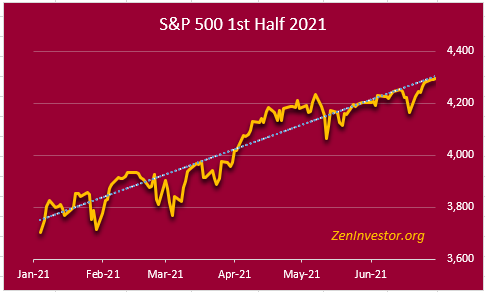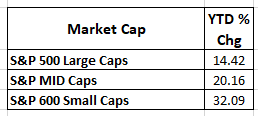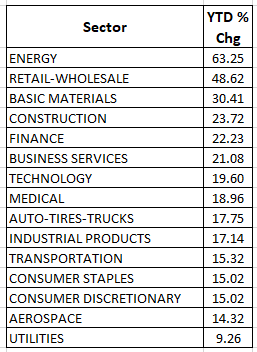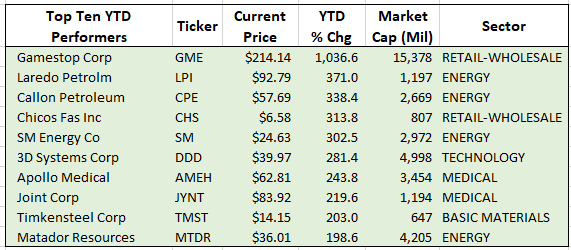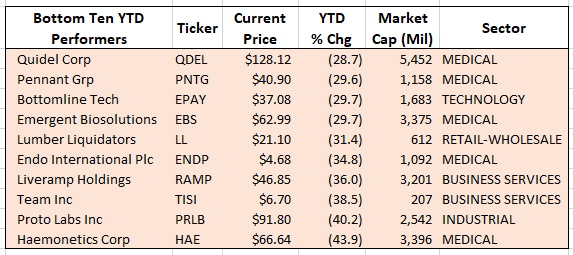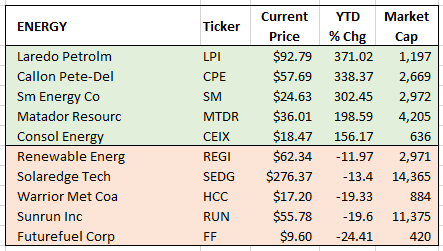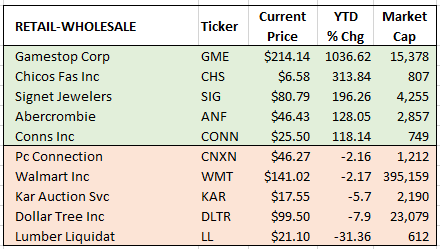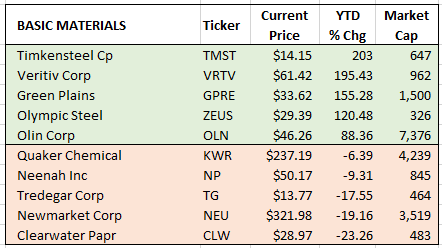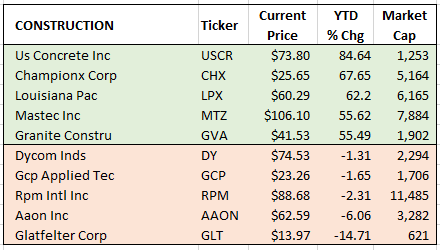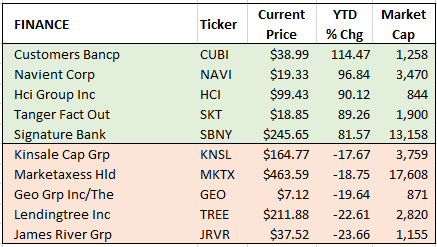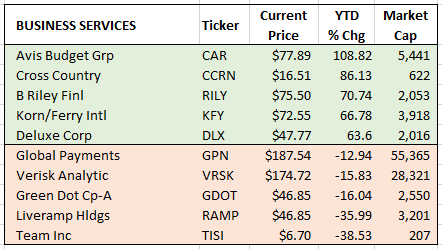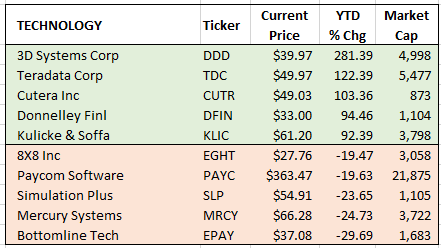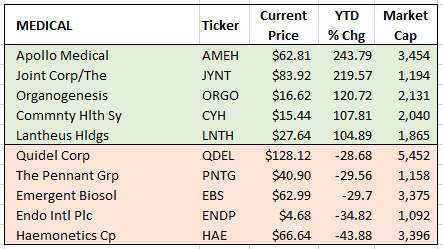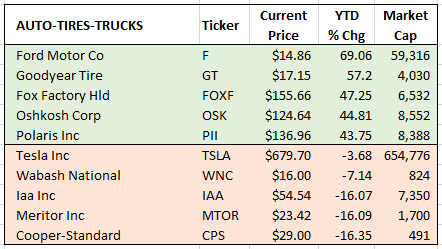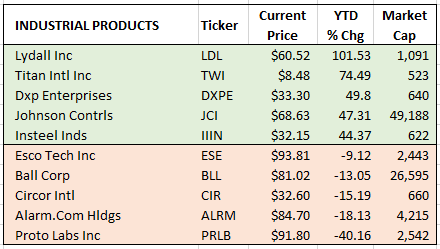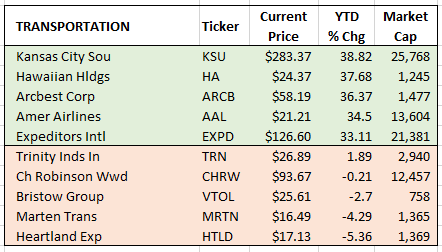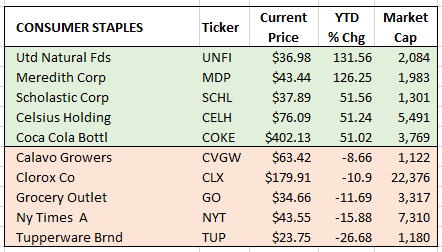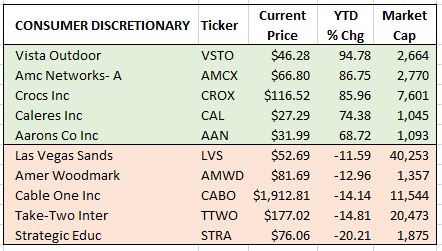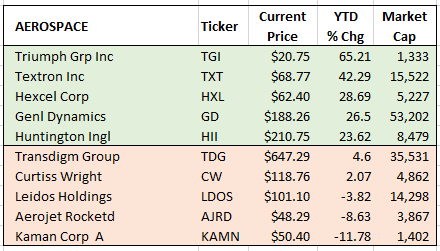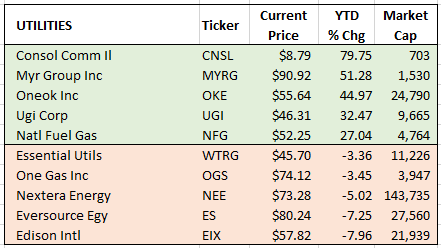The market is off to a great start this year. A look below the surface reveals plenty of great stocks at reasonable prices.
First up is a snapshot of the S&P 500 year-to-date through June 30. This large-cap index is up 14.4% YTD - a very respectable start for any year, and especially one that is digging its way out of a large economic hole.
The rest of the charts and tables include mid- and small-caps along with their larger brethren. This gives us a much deeper perspective on the market. I will also drill down into the 15 sectors tracked by Zacks Investment Research.
The table below shows the wide disparity of returns among large, mid, and small cap stocks. An overweight allocation to small caps would have paid off nicely.
This next table shows the returns for the 15 sectors. Energy was the clear leader, and Retail-Wholesale was strong as a result of strong consumer spending.
Next we see the top-performing stocks YTD. The Gamestop story is well known, and the rest of the list is dominated by energy companies. Wall Street has been warming up to Gamestop recently but it remains very overpriced.
Other stocks on this winner's list that are not overpriced, and have high scores from S&P Global for quality and growth include SM Energy, Apollo Medical, Joint Corp, and Timkensteel. (Always do your own due diligence before buying or selling any of the stocks mentioned in this article.)
Next up is a list of the ten worst performers YTD. The list is dominated by medical companies. But some of these stocks get high marks from S&P Global for quality and growth, such as Quidel, Pennant, Bottomline, and Endo. These names are worth a look.
The next series of charts highlights the top and bottom performers for each of the 15 Zacks sectors. I have ordered the tables from the strongest to weakest sectors. We begin with energy - the strongest of them all.
SM and CEIX have high scores from S&P Global. The rest of these names might be better left alone.
We covered GME earlier. SIG, ANF, CONN, KAR. and LL get good scores from S&P Global.
In addition to TMST, VRTV, ZEUS, OLN also look promising, according to S&P Global. TG is still expensive but it scores well for quality and financial health. CLW is very cheap and scores well on quality and financial health.
LPX and MTZ are loved by analysts and they both score very high on S&P Global metrics. GLT is cheap and deserves a closer look.
CUBI and GEO stand out here with high marks for valuation and quality.
Analysts love RILY and KFR but their S&P Global scores are middling.
DDD is expensive, TDC is still cheap, DFIN gets high marks across the board,
AMEH, JYNT, and QDEL deserve a closer look with their high S&P Global scores.
F, OSK and GT still look cheap, with good scores to boot.
As we wind down into the weakest sectors, good stocks are harder to find. IIIN is the only name that looks good here,
ARCB looks promising, with high scores from S&P Global and the analyst community. MRTN looks slightly undervalued but scores well for quality and growth.
MDP and COKE look like bargains with good scores.
VSTO still looks cheap and has good scores. AMCX should not be mistaken for AMC - the well-known Meme stock. AMCX is highly rated by analysts and S&P Global.
TXT and HII look good in here. The rest of this list should be avoided.
At last we come to the bottom performing sector - Utilities. MYRG looks very good, with high marks in every category. The problem is that they don't pay a dividend. UGI looks good as well. And they do pay a dividend of 3%.
Final thoughts.
When you look at the market in a granular way as we did today, you begin to see patterns and trends that aren't visible on the surface. One way to use this information is to look at companies that have been beaten down in price but still have great potential. Buying high quality stocks with solid earnings growth and financial stability can pay off handsomely in the mid- to long-term.

